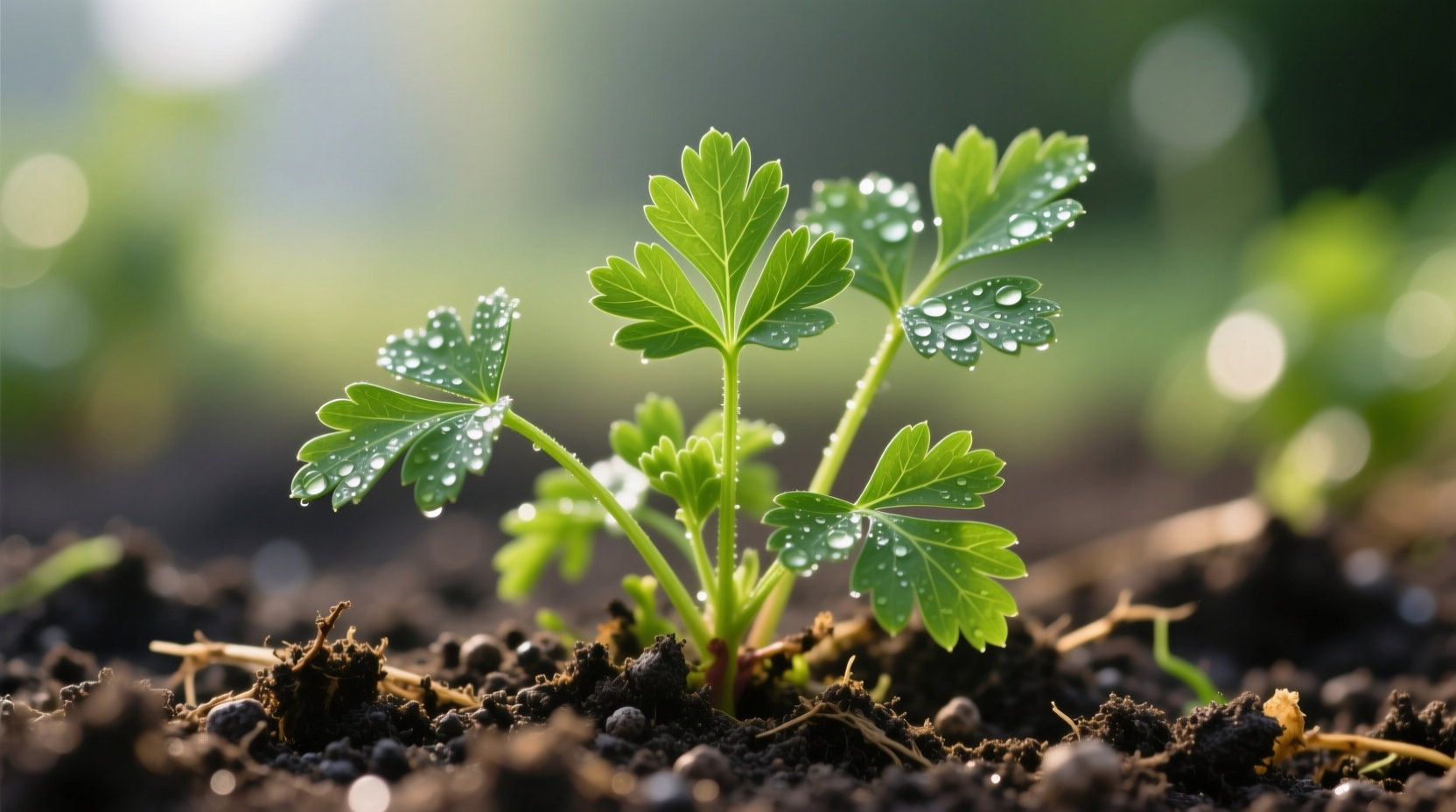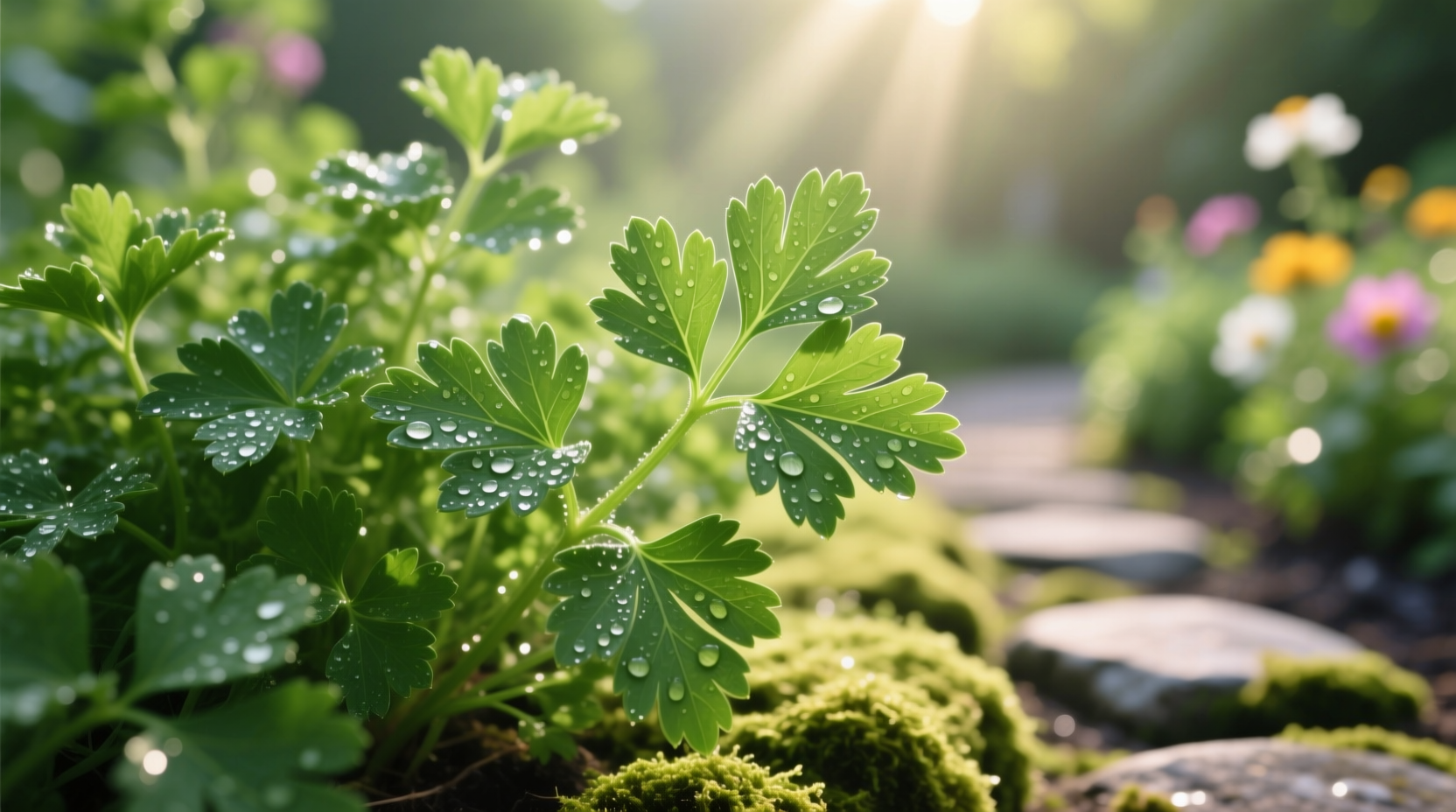Discover how to transform your garden into a vibrant source of fresh, flavorful parsley that elevates your cooking while reducing grocery expenses. Whether you're cultivating in raised beds, containers, or traditional garden plots, this comprehensive guide delivers proven techniques for growing parsley that outperforms store-bought varieties in both flavor intensity and nutritional value.
Planning Your Parsley Garden
Successful parsley cultivation begins with strategic planning. Unlike many herbs, parsley establishes slowly but delivers consistent harvests for up to two years when properly maintained. Consider these essential planning factors before planting:
- Variety selection: Choose between curly leaf (Petroselinum crispum crispum) for decorative garnishes or flat-leaf Italian (Petroselinum crispum neapolitanum) for superior flavor in cooking
- Climate compatibility: Parsley tolerates light frosts but thrives in temperatures between 50-80°F (10-27°C)
- Space requirements: Allow 8-10 inches between plants with 18-24 inches between rows for optimal air circulation
- Soil preparation: Amend garden beds with 2-3 inches of compost to achieve the slightly acidic pH (6.0-7.0) parsley prefers
| Variety Type | Flavor Profile | Growth Habit | Best Culinary Uses |
|---|---|---|---|
| Curly Leaf | Mild, slightly bitter | Compact, decorative foliage | Garnishes, tabbouleh, soups |
| Flat-Leaf Italian | Robust, earthy, aromatic | Upright, vigorous growth | Sauces, stews, pesto, marinades |
| Japanese Parsley | Delicate, cilantro-like | Slender stems, fern-like leaves | Asian cuisine, delicate sauces |
Planting Techniques for Maximum Yield
Parsley's slow germination (2-5 weeks) requires patience, but these proven methods accelerate establishment. Start seeds indoors 8-10 weeks before your last expected frost date using biodegradable pots to avoid root disturbance during transplanting. Alternatively, direct sow seeds outdoors when soil reaches 50°F (10°C), planting them ¼ inch deep in moist soil.
For faster germination, soak seeds in warm water for 24 hours before planting. Maintain consistent soil moisture during germination—dry conditions significantly delay sprouting. When transplanting seedlings, bury stems up to the first set of true leaves to encourage stronger root development. Space plants according to the variety-specific requirements outlined in our comparison table.

Care and Maintenance Essentials
Proper care transforms average parsley plants into productive garden assets. Water deeply 1-2 times weekly, providing approximately 1 inch of water to maintain consistent soil moisture without waterlogging. Apply 2-3 inches of organic mulch to conserve moisture and suppress weeds while regulating soil temperature.
Fertilize monthly with a balanced organic fertilizer (5-5-5 NPK) after the first harvest. Remove flower stalks immediately when they appear to prevent the plant from going to seed, which diminishes leaf production and flavor. In regions with harsh winters, protect plants with row covers or mulch to extend the harvest season.
Harvesting for Peak Flavor and Regrowth
Timing your harvest correctly ensures maximum flavor and plant longevity. Begin harvesting when plants reach 6-8 inches tall, taking outer stems first to encourage continuous new growth from the center. The optimal harvesting window occurs in the morning after dew has dried but before midday heat intensifies.
For culinary applications requiring intense flavor, harvest leaves just before the plant flowers. Regular harvesting every 2-3 weeks stimulates vigorous regrowth—never remove more than one-third of the plant at any single harvest. Store freshly cut stems in a glass of water in the refrigerator for up to two weeks, or freeze chopped leaves in olive oil for long-term preservation.
Common Challenges and Solutions
Garden parsley generally resists most pests but faces specific challenges requiring attention. Aphids and spider mites occasionally infest plants—dislodge them with a strong spray of water or apply insecticidal soap for severe infestations. Root rot occurs in poorly drained soils; amend heavy clay soils with perlite and compost before planting.
Yellowing leaves typically indicate overwatering or nitrogen deficiency—adjust watering practices and apply a balanced fertilizer. In hot climates, provide afternoon shade to prevent bolting. Rotate planting locations annually to prevent disease buildup, as parsley belongs to the Apiaceae family which shares susceptibility to similar soil-borne pathogens.
Maximizing Culinary Applications
Homegrown parsley delivers superior flavor complexity compared to store-bought varieties. The essential oil content (apiol and myristicin) peaks when leaves are harvested in the morning, providing more intense aroma and flavor. Use flat-leaf varieties as the foundation for persillade (chopped parsley and garlic) to enhance meats and vegetables.
Preserve summer abundance by freezing chopped leaves in ice cube trays with olive oil—a technique that maintains flavor integrity better than drying. Incorporate stems into vegetable stocks for added depth, as they contain concentrated flavor compounds. For vibrant green color in dishes, add parsley during the final minutes of cooking to preserve chlorophyll.











 浙公网安备
33010002000092号
浙公网安备
33010002000092号 浙B2-20120091-4
浙B2-20120091-4